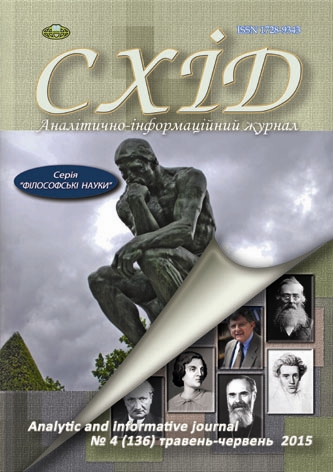Environmental Writing as a Humanitarian Response to Environmental Challenges
DOI:
https://doi.org/10.21847/1728-9343.2015.4(136).47453Keywords:
humanitarian response, environmental writing, next, cultureAbstract
In the article the phenomenon of environmental literature as a humanitarian response to the environmental challenges of our time. The role of literature in understanding the environmental challenges of our time belongs to the newest areas of research. Of particular note is highlighting the phenomenon of literature as a factor ekoeducation and environmental awareness.
Ecological Literature, representing by different in form and genre texts in a specific way connects the science, education, philosophy, politics, promoting the entry of environmental ideas in the broad cultural field.
Relatively modern ecological literature can be divided into the literature on wildlife and literature on the environmental crisis and catastrophe.
First class literature combined under the title "nature writing", and to some extent continues the tradition of romanticism and naturalism, and describes the nature and tradition of thinking about nature. To describe second-class literature often use the term "environmental writing".
On the one hand, it is rooted in the tradition of romanticism and naturalism on the other - aimed at the future, as it provides valuable guidance to people on nature conservation and environmental problems. In general, all these diverse body of texts can be divided into: texts belonging to "nature writing"; texts that combine the features of "nature writing" and "environmental writing" ("nature/environmental writing"); texts belonging to the "environmental writing".
Texts of environmental literature generated in long observations of the natural world, the relationships in nature, for its integrity and, at the same time, awareness of the vulnerability of nature. Environmental literature proves the thesis of "the presence in the culture of science and culture in science."
The phenomenon of environmental writing as a humanitarian reaction on environmental challenges of nowadays is considered. Environmental writing represented by texts of different forms and genres interconnects in a specific way science, education, philosophy, policy, promoting inclusion ideas about nature protection in the wide cultural field.Downloads
References
Apel K. O. (1999), The Ecological Crisis as a Problem for Discourse Ethics (translated), in: Communicative practical philosophy, Libra, Kyiv, pр. 413-454 (ukr).
Habermas Jurgen (2011), Postmetaphysical Thinking (translated), Dukh i Litera, Kyiv, 199 p. (ukr).
Gadamer Hans-Georg (1988), Truth and Method (translated), Progress, Moscow, 704 p. (rus).
Gore Al (2001), Earth in the Balance: Forging a New Common Purpose (translated), Intelsfera, Kyiv, 404 p. (ukr).
Leopold Oldo (1983), A Sand County Almanac (translated), Mir, Moscow, 248 p. (rus).
Medawar P. B., Medawar J. S. (1983), The Life Science (translated), Mir, Moscow, 207 p. (rus).
Hayles N. Katherine (2013), How We Became Posthuman : Virtual Bodies in Cybernetics, Literature, and Informatics (translated), Nika-Tcentr, Kyiv, 426 p. (ukr).
EASLCE, available at: http://www.easlce.eu/about-us/ (engl).
Heinze Wayne, Fishing With the Naturalists, available at: http://naturewriting.com/essays-detail.php?recordID=468 (engl).
Heinze Wayne, Sand in My Shoes, available at: http://naturewriting.com/essays-detail.php?recordID=464 (engl).
Nature writing, available at: http://grammar.about.com/od/mo/g/natwriterm.htm (engl).
The Blog of Ron Harton, available at: http://naturewriting.com/blog/ (engl).
Wilson E. O. (1994), “Naturalist”, WaShington, D. C., Island Press, Shearwater Books, 380 p. (engl).
Downloads
Published
How to Cite
Issue
Section
License
Copyright (c) 2015 Nelya Filyanina

This work is licensed under a Creative Commons Attribution-NonCommercial-NoDerivatives 4.0 International License.
1. Authors bear responsibility for the accuracy of facts, quotations, numbers and names used.
2. Manuscripts are not sent back.
3. The publisher does not always agree with the authors' opinion.
4. The authors reserve the right to authorship of the work and pass the first publication right of this work to the journal under the terms of a Creative Commons Attribution-NonCommercial-NoDerivatives 4.0 International License. This license allows others to distribute (copy) the published work for non-commercial purposes, provided there is mandatory attribution to its authors and a link to the first publication in our journal.
5. The authors have the right to conclude separate supplement agreements that relate to non-exclusive work distribution in the form in which it has been published by the journal (for example, to upload the work to the online storage of the journal or publish it as part of a monograph), provided that the reference to the first publication of the work in this journal is included.

